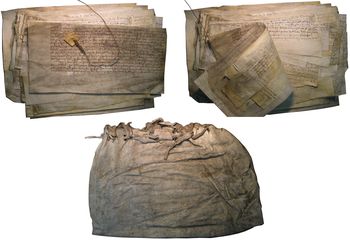Living Standards and Material Culture in English Rural Households 1300-1600: Digital Archive
Alice Forward, Ben Jervis, Chris Briggs, Mathew Tompkins, Tomasz Gromelski, 2021. https://doi.org/10.5284/1085022. How to cite using this DOI
Data copyright © Chris Briggs, Ben Jervis, Alice Forward unless otherwise stated
This work is licensed under a Creative Commons Attribution 4.0 International License.
Primary contact
Ben
Jervis
Lecturer in Archaeology
School of History, Archaeology and Religion,
Cardiff University
John Percival Building
Colum Drive
Cardiff
CF10 3EU
Wales
Tel: 02920 875611
Resource identifiers
- ADS Collection: 3781
- DOI:https://doi.org/10.5284/1085022
- How to cite using this DOI
Introduction

This is a Leverhulme Trust funded project which examines the archaeological and historical evidence for material culture in English medieval rural households. The focus of the work is on non-elite households in villages and small towns. Our aim has been to reconstruct and interpret the range of goods possessed by agriculturalists, craftsmen and traders, and labourers. Archaeological and archival evidence for 15 counties has been collected to test the following hypotheses:
- that the demographic losses following the Black Death of 1348-9 and subsequent epidemics led to a rise in living standards, as evident in the quantity and variety of goods possessed by households;
- that the rural population of medieval England had a sophisticated material culture, which, in turn, has implications for understanding the extent to which an early 'consumer revolution' occurred in the later middle ages or early modern period.
The project represents a joint endeavour between historians and archaeologists and is aimed at gaining a picture of rural material culture fuller than that attainable by looking only at objects or documents in isolation. A key outcome of this research has been the assembly of new datasets by bringing together scattered evidence on small finds from excavations, and by exploiting hitherto neglected records that detail the forfeited chattels of felons (including suicides), fugitives and outlaws. Using both quantitative and qualitative methods, the work is also characterized by a close attention to regional differences, which is reflected in the choice of counties for study, and to chronological change, as we have compared the material world of later fourteenth and fifteenth centuries with the equivalent picture in the rapidly changing conditions of the sixteenth century. Overall, while it is clear that people in the countryside before 1500 clearly placed weight on distinctive objects such as basins and ewers, belts, and pewter vessels, we have found little support for the idea of a significant late medieval increase in non-food consumption. In some groups, however, such a growth in the variety and number of household objects is evident by the later sixteenth century in the evidence we have gathered.






